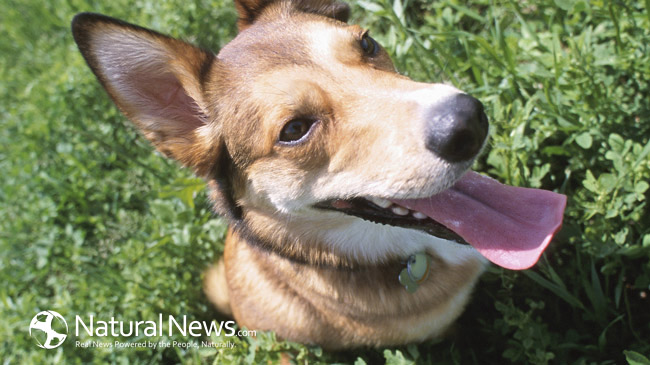Dog bites can occur unexpectedly and
often result in a range of injuries from minor scratches to serious wounds.
When a person is bitten by a dog, it’s crucial to act promptly to minimize the
risk of infection and ensure proper healing. Immediate and appropriate
treatment is paramount regardless of the dog’s vaccination history or the
severity of the bite.
Managing a dog bite involves cleaning the wound thoroughly to remove any bacteria that could cause infection. It is imperative to seek professional medical attention, especially if the bite is deep, unprovoked, or if the status of the dog’s vaccinations is unknown. Medical professionals can assess the need for additional treatments such as tetanus shots or rabies vaccination, which are often necessary after animal bites.
Often, when people think of dangerous dogs, they think of American Pit Bull terriers and similar breeds. But that doesn’t have to be the case.
Immediate
Actions After a Dog Bite
When a person sustains a dog bite,
immediate action is crucial to prevent infection and ensure proper healing. The
steps taken right after the bite can be pivotal in the outcome of the injury.
Assess
the Severity of the Bite
The individual should first
determine the gravity of the bite. Minor scrapes might only break the surface
of the skin, while a more severe bite could involve deep punctures or
lacerations. If the wound is gaping, or the bleeding is profuse and does not
stop, medical attention should be sought immediately.
Wash
the Wound
After assessing the wound:
- Cleanse the affected area using soap and water.
- It’s important to wash the bite thoroughly for at least 5 minutes to remove any bacteria
- Ensure water is warm to help clean the wound effectively
Control
Bleeding
To stop the bleeding:
- Apply pressure to the wound using a clean cloth or bandage
- Maintain pressure until the bleeding diminishes
- If bleeding continues heavily and unabated, seek medical attention promptly
Seeking
Medical Care
Immediate medical attention after a
dog bite is crucial for preventing infection and addressing potential
complications such as rabies and tetanus. A timely assessment by a healthcare
provider ensures proper care.
Consult
a Doctor
After a dog bite, individuals should
see a doctor if the wound is serious, if bleeding does not stop within
15 minutes, or if the skin has been broken. A medical professional will assess
the wound and decide if stitches are needed and prescribe antibiotics to
prevent infection.
Understand
Rabies Risks
It’s essential to consider rabies, a
fatal virus spread through the saliva of infected animals. If there is any
question about the dog’s rabies vaccination status, or if the dog is
unknown and cannot be observed for signs of rabies, individuals should receive
a rabies vaccine. In the United States, rabies in dogs is rare, but
medical guidance is critical in assessing the necessity of the vaccine.
Medical
Treatment and Vaccinations
Medical treatment may include:
- Cleansing the wound with soap and water
- Applying antibiotic ointment to prevent infection
- Administering a tetanus shot if the patient has not had one in the past five years
Patients should follow their
doctor’s instructions about wound care and changing bandages, and they may need
to return for a follow-up visit to ensure proper healing.
Monitoring
the Bite Area
After a dog bite, it is crucial to
monitor the bite area for any signs of worsening or infection. Careful
observation can help manage potential complications effectively.
Identify
Signs of Infection
The individual should look for
indicators of infection at the site of the dog bite. These signs include:
- Redness: An expanding area of redness around the bite may suggest an infection
- Swelling: Increased swelling can occur with infection
- Pain: If pain intensifies, it may be a sign of an infection developing
- Heat: The bitten area might feel warmer than the surrounding skin
- Pus: The presence of pus or other drainage is a concern for infection
- Fever: Developing a fever can indicate a systemic infection
If any signs of infection appear,
the individual should seek medical attention immediately.
Home
Care Instructions
For the home care of a dog bite, the
person should follow these steps:
- Clean the wound immediately with mild soap and warm water
- Apply an over-the-counter antibiotic cream if available
- Bandage: Cover the bite with a clean, sterile bandage
- Change bandages: Replace the bandage several times a day
- Monitor: Watch for the infection signs listed above daily
Home care is essential, but any
worsening of the bite area should prompt professional medical review.
Legal
and Safety Considerations
In the aftermath of a dog bite,
addressing the legal and safety aspects is crucial for the victim’s well-being
and to ensure accountability. Prompt actions not only safeguard the public but
also assist in preventing future incidents.
Report
the Incident
If someone has been bitten, they
should report the bite to the proper authorities immediately. This is to ensure
public safety and to start the documentation process. The victim or a witness
should contact:
- Local animal control agency: to file a report and initiate an investigation
- Police department: if the situation is severe or if immediate assistance is needed
Reporting also entails providing the
owner’s contact information, if known, and any details about the incident for
accurate record-keeping.
Dog
Owner Responsibilities
Dog owners have a legal obligation
to control their animals and prevent harm to others. If a dog bites someone,
the owner is typically held liable, especially:
- If the incident occurred on the owner’s property
- If there was no provocation
- If the owner was aware of the dog’s dangerous tendencies
Owners must cover all damages
related to the bite and may face additional legal consequences depending on
state law.
Preventing
Future Incidents
Preventing dog bites involves
education and proactive measures by dog owners and the community:
- Training and socialization: Owners should ensure their dogs are well-trained and socialized to reduce aggressive tendencies
- Restraints: Dogs should be properly leashed or confined, particularly in public spaces to prevent unexpected bites
- Awareness campaigns: Community programs can educate the public on safe interaction with dogs, thereby increasing overall safety
By taking these steps, they can
contribute significantly to preventing dog bites and enhancing community
welfare.
Prevention
and Education
Educating oneself on dog behavior and
investing in proper training are critical components of preventing dog bites.
Building community awareness can further reinforce safety measures to protect
both adults and children from potential harm.
Understanding
Dog Behavior
Understanding dog body language is
vital in preventing dog bites. Dogs often signal discomfort or stress through
their body language, which can precede a bite. For instance, a dog that is
barking or growling is displaying clear signs of distress or agitation.
Similarly, dogs that are loose, behind a fence, or tied up may feel threatened
by an unfamiliar approach and react defensively. It is crucial for families to
teach children to recognize these cues, emphasizing that they should avoid
interacting with dogs that show signs of anxiety or aggression.
Effective
Dog Training
Effective dog training employs
positive reinforcement methods to ensure dogs are well-behaved. Training should
start early in a dog’s life to instill good habits and prevent aggressive
tendencies. Consistent training sessions reinforce desired behaviors and teach
dogs appropriate ways to interact with humans and other animals. Adults should
be actively involved in the dog’s training process to understand the commands
and reinforcement strategies used. This ensures that all family members can
maintain a consistent approach to the dog’s discipline and care.
Community
Awareness
Increasing community awareness about
dog bite prevention is a collective responsibility. Safety seminars and
educational programs can equip people with the knowledge needed to avoid dog
bites. Communities should advocate for responsible pet ownership, including the
importance of supervision when dogs are around children. Public information
campaigns can also illustrate the importance of never leaving babies or young
children alone with a dog, as this can lead to accidental harm if a dog
misinterprets a child’s actions.
Long-Term
Management
Long-term management after a dog
bite is essential to address potential complications and support recovery.
Adequate follow-up care, treatment for scarring, and addressing psychological
impacts are key for comprehensive healing.
Follow-Up
Medical Care
After initial treatment, follow-up
medical care is crucial. Patients should regularly inspect the wound for
signs of infection, such as redness, swelling, or increased pain. They may need
to continue taking antibiotic ointment or oral antibiotics prescribed by
a healthcare provider to prevent infection. If stitches were applied, a
professional will need to remove them in accordance with the healing timeline.
Further medical care might include monitoring of muscle, bone,
and nerve function, especially if the bite was deep and affected these
structures.
Dealing
with Physical Scarring
Dog bites can leave scars. If
a scar develops, consult with a healthcare provider about possible treatments:
- Scar management: Using specialized silicone gels or sheets can help reduce scar formation
- Scar revision surgery: For extensive scarring, surgery may be required not only for cosmetic reasons but to restore function if scars are limiting movement of underlying muscles and tendons
Psychological
Impact
Psychological effects like anxiety
and fear can persist long after the physical wound has healed. It is
important for individuals to seek professional help if they experience signs of
trauma, which could manifest as an ongoing fear of dogs or reluctance to engage
in previous activities. Cognitive behavioral therapy and support groups might
be beneficial in managing psychological symptoms related to the dog bite
incident.
Understanding
Dog Bite Pathogens
When a dog bite occurs, it is
important to be aware of the potential for infection. Pathogens, including
various bacteria, can enter the wound and, if left untreated, may lead to
serious complications such as sepsis.
Common
Bacterial Infections
Capnocytophaga can be transmitted through a dog’s saliva. While not
common, it can lead to infections in humans when introduced through bite
wounds. Risk is especially high for those with weakened immune systems.
Staphylococcus, commonly referred to as staph, is a group of bacteria
present on the skin. Staph infections from dog bites can range from mild to
severe, potentially resulting in MRSA (Methicillin-resistant Staphylococcus
aureus), if the strain is antibiotic-resistant.
Pasteurella is a bacterium commonly found in the mouths of dogs and is
present in over 50% of dog bite wounds. Symptoms of Pasteurella infections can
include redness, swelling, pain, and tenderness.
Sepsis, a potentially life-threatening condition, can occur if dog
bite wounds are left untreated and bacterial infections enter the bloodstream.
Immediate medical attention is crucial for suspected sepsis.
It’s imperative to clean any dog
bite wound thoroughly and seek medical attention to minimize the risk of these
infections and their complications.



